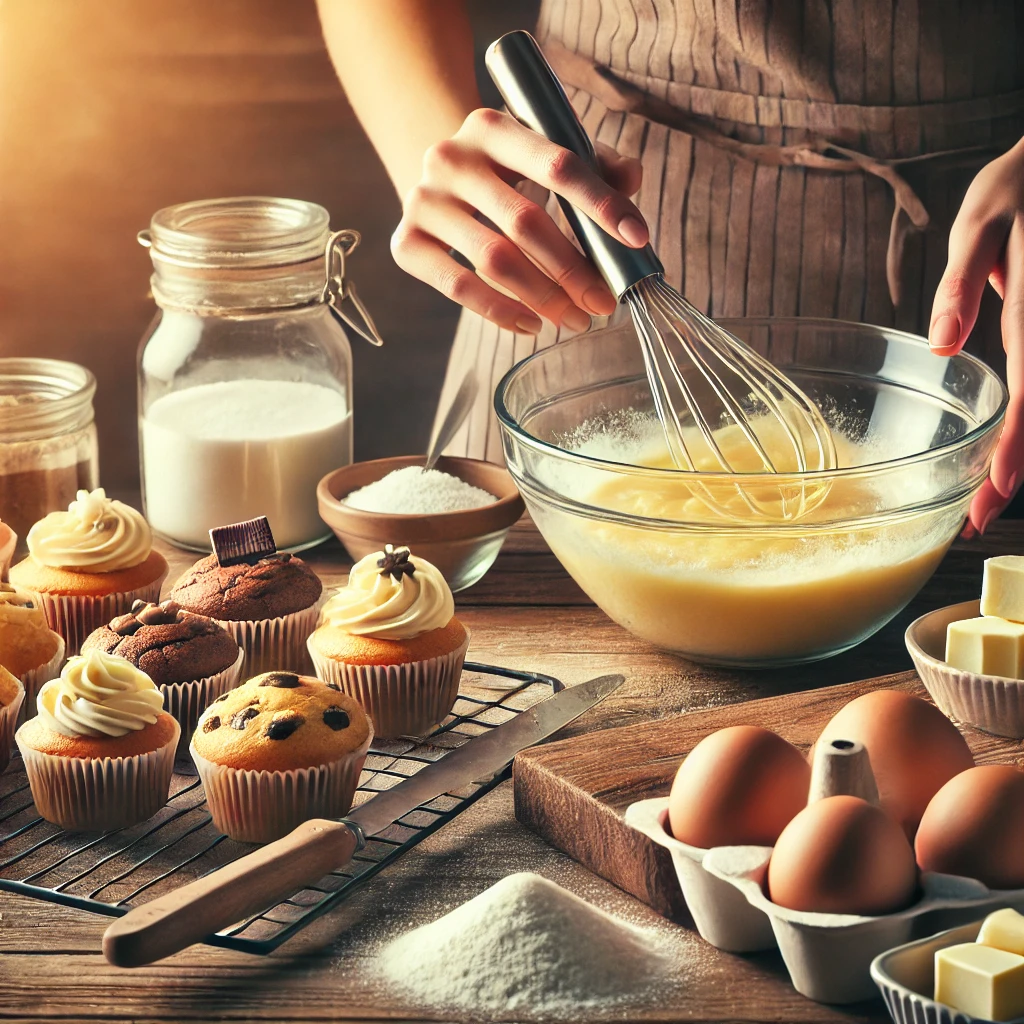
Simple Baking Techniques for Perfect Desserts Every Time
Want to bake like a pro? These simple baking techniques will ensure your desserts come out perfect every time, whether you're a beginner or an expert.
Why Baking Can Be Easy and Fun
Baking doesn’t have to be intimidating. With the right techniques, even beginners can whip up delicious homemade comfort food recipes without a hitch.
1. Understanding Baking Basics
The Science Behind Baking
Baking is all about chemistry. The perfect balance of ingredients creates the magic. Mess with the ratios, and you might end up with a disaster.
Essential Baking Ingredients
Every baker should know the role of flour, sugar, eggs, butter, and leavening agents like baking powder and yeast.
2. The Must-Have Tools for Baking Success
Basic Kitchen Essentials
You don’t need fancy tools. A good set of mixing bowls, measuring cups, a whisk, and a reliable oven thermometer can do wonders.
Pro Tools for Advanced Bakers
Want to take your baking to the next level? Invest in a stand mixer, pastry blender, and piping bags for more precision.
3. Mastering the Art of Measuring
In baking, precision is key. A little extra flour or sugar can completely alter the texture of your dessert.
How to Measure Dry Ingredients Correctly
Always use a dry measuring cup and level off excess ingredients with a knife.
Why Liquid Ingredients Need a Different Approach
For liquids, use a clear measuring cup and check at eye level for accuracy.
4. Mixing Methods for Flawless Texture
The Creaming Method
Perfect for cakes! Cream butter and sugar together until light and fluffy before adding other ingredients.
Folding for Fluffy Bakes
Gently fold in egg whites or whipped cream to keep the batter airy and light.
5. Oven Temperature: The Hidden Secret
Ever wondered why your cake is dry or undercooked? Your oven might be lying to you!
The Importance of Preheating
Never skip preheating! Baking in a cold oven leads to uneven cooking.
Using an Oven Thermometer
Most ovens are inaccurate. Use a thermometer to make sure you’re baking at the right temperature.
6. The Right Way to Cool and Store Baked Goods
Cooling Techniques for Maximum Freshness
Always cool cakes on a wire rack to prevent sogginess.
Storing Desserts Properly
Keep cookies in an airtight container and cakes wrapped in plastic to maintain moisture.
7. Healthy Baking Alternatives
Low-Calorie Baking Swaps
Swap sugar with honey or mashed bananas for a healthier twist.
Gluten-Free Dessert Options
Try almond or coconut flour for a gluten-free treat everyone will love.
8. Quick and Easy Recipes for Beginners
Short on time? Try these simple recipes that take minimal effort but deliver maximum flavor.
Easy 15-Minute Mug Cake
A single-serving dessert you can whip up in minutes using just a microwave.
Healthy 15-Minute Banana Oat Cookies
No sugar, no flour—just healthy goodness in a cookie form!
9. Troubleshooting Common Baking Problems
Why Did My Cake Sink in the Middle?
Overmixing, underbaking, or peeking too soon can lead to a collapsed cake.
Fixing Dry or Tough Baked Goods
Overbaking or using too much flour? Add more moisture with ingredients like yogurt or applesauce.
FAQs
1. What are the easiest desserts to start with?
Mug cakes, cookies, and no-bake cheesecakes are great beginner-friendly options.
2. Can I substitute butter with oil in baking?
Yes, but it will affect the texture. Butter adds richness, while oil makes baked goods more moist.
3. How do I prevent cookies from spreading too much?
Chill the dough before baking and use parchment paper instead of greased trays.
4. Why do my cupcakes have a dense texture?
Overmixing the batter or using too much liquid can cause dense cupcakes.
5. What’s the best way to store leftover cake?
Wrap it in plastic wrap and store at room temperature for up to three days or refrigerate for longer shelf life.